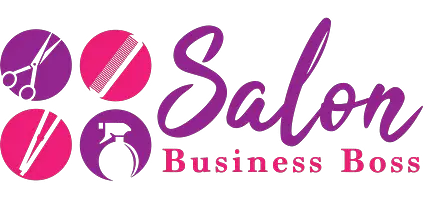The hair salon industry is a thriving sector that caters to the grooming and beauty needs of millions of people worldwide. As a business owner or investor in the hair salon industry, understanding key financial metrics, such as profit margin, is essential for making informed decisions.
The average profit margin for a hair salon is about 8.2%. This essential financial indicator reflects how efficiently the business converts revenue into profit after accounting for expenses. Factors such as location, operational costs, labor, and product mix influence the margin. Striking a balance between costs and quality services is crucial for sustained profitability in this competitive industry.
1. Defining Profit Margin:

Profit margin serves as a fundamental financial metric that unveils a company’s overall profitability concerning its generated revenue. Represented as a percentage, it encapsulates the proportion of revenue retained as profit after offsetting all expenses, ranging from day-to-day operational costs to employee salaries and various overheads. Particularly pertinent to hair salons, profit margin acts as a mirror reflecting the efficacy with which a salon translates its revenue into actual profits.
For hair salon owners and investors alike, comprehending profit margin is imperative in gauging the business’s financial health and viability. A healthy profit margin indicates that the salon is efficiently managing costs and generating enough profits to sustain its operations and expansion.
Achieving a favorable profit margin entails balancing revenue generation with cost management. Hair salons must keenly analyze their financial statements, track expenses, and identify areas where improvements can be made to boost profitability. Ultimately, maintaining an optimal profit margin ensures the longevity and success of a hair salon in a competitive market, allowing the business to thrive while delivering exceptional services to its clientele.
Read more about: Breaking Barriers: Starting a Hair Business from Home
2. Calculating Profit Margin for Hair Salons:
Calculating the profit margin for a hair salon involves a straightforward yet critical formula. Begin by determining the net profit, which is the difference between the total revenue earned and all the associated expenses incurred by the salon. Next, divide the net profit by the total revenue and multiply the result by 100 to express the value as a percentage.
This formula encapsulates the essence of the salon’s financial performance, serving as a yardstick to evaluate the efficiency of its revenue-to-profit conversion. The higher the profit margin, the more effectively the salon manages its costs and maximizes profits. Conversely, a lower profit margin may indicate potential inefficiencies or room for improvement in managing expenses and increasing profitability.
Analyzing the profit margin over time provides salon owners with valuable insights into the business’s financial trajectory and allows them to make informed decisions regarding strategic investments, pricing adjustments, and operational enhancements. Regularly monitoring and benchmarking profit margins against industry standards can empower hair salon owners to optimize their financial performance and steer their businesses toward long-term success.
3. Factors Affecting Profit Margins in Hair Salons:
The profit margins of hair salons are subject to a multitude of factors, each playing a pivotal role in shaping the financial success of the business. One such influential factor is the strategic location of the salon. Establishing the salon in high-traffic areas within bustling urban centers can attract a more substantial customer base, translating to increased revenue and, in turn, potentially higher profit margins. The accessibility and visibility of the salon in such prime locations enhance its chances of attracting repeat and new clientele.
Conversely, hair salons situated in less populated or remote areas may encounter challenges in achieving comparable profit margins. The scarcity of foot traffic can limit the number of potential customers, reducing revenue streams and affecting overall profitability. To combat this, salon owners in less optimal locations may need to implement creative marketing strategies, focus on niche markets, or offer unique services to attract customers from neighboring areas.
4. Operational Costs and Overheads:
Effective management of operational costs and overheads plays a vital role in maintaining a healthy profit margin for hair salons. Operational costs encompass a wide range of expenses, including but not limited to rent or mortgage payments for the salon space, utilities such as electricity and water, and regular supplies like hair care products and styling tools. Additionally, employee salaries and benefits form a substantial portion of operational costs, especially if the salon employs skilled and experienced stylists.
Proactive financial planning and meticulous budgeting are essential to minimize unnecessary expenses and optimize cost-efficiency. Salon owners can explore bulk purchasing options for products and supplies to avail discounts, negotiate favorable lease terms, and invest in energy-efficient equipment to reduce utility bills. Moreover, implementing staff training programs to enhance productivity can lead to better service efficiency and ultimately contribute to improved profit margins.
Analyzing historical financial data, conducting regular expense audits, and benchmarking against industry standards enable hair salon owners to identify cost-saving opportunities and allocate resources judiciously. By adopting a proactive approach to managing operational costs and overheads, hair salon businesses can thrive even in competitive markets and maintain healthy profit margins in the long run.
5. Labor Costs and Staffing:
n the context of hair salons, labor costs encompass wages, benefits, and commission structures for stylists, assistants, receptionists, and other salon staff. As these professionals play a pivotal role in delivering high-quality services and creating a positive customer experience, their expertise is essential for attracting and retaining clientele.
However, labor costs can pose a significant challenge to a salon’s profit margins. Employing skilled stylists often comes with higher salary demands, and offering competitive compensation packages can strain the budget. To strike a balance between quality services and cost-effectiveness, salon owners must focus on maximizing staff productivity and efficiency.
Efficient staff scheduling, proper time management, and leveraging technology to streamline operations can help optimize labor utilization and minimize idle time. Regular training and upskilling sessions can enhance the capabilities of salon staff, leading to faster service delivery and an improved customer experience.
Establishing performance-based commission structures can motivate stylists to boost their productivity, as they directly benefit from their efforts. Additionally, aligning compensation packages with industry standards ensures that the salon remains competitive while maintaining a healthy profit margin.
6. Product and Service Mix:
The product and service mix offered by a hair salon significantly impacts its overall revenue and profit margins. By diversifying their offerings, salons can attract a broader customer base and capitalize on varying customer preferences.
Upselling premium services, such as specialty treatments, hair color transformations, or luxury spa experiences, can boost revenue and contribute to higher profit margins. These premium services not only increase the average transaction value but also position the salon as a destination for unique and exclusive experiences.
Incorporating a retail section within the salon, offering hair care products, styling tools, and other beauty essentials can also be a lucrative revenue stream. Encouraging stylists to recommend products to clients after services can boost retail sales and further augment profit margins.
Understanding customer preferences and tailoring services to meet their specific needs and desires is crucial for sustainable profitability. Conducting surveys or engaging in direct conversations with clients can provide valuable insights into customer demands and preferences. By incorporating these insights into the salon’s service menu, hair salon owners can create a well-rounded product and service mix that fosters customer loyalty and drives higher profitability.
7. Seasonal Fluctuations:

Seasonal fluctuations present both opportunities and challenges for hair salon businesses. During peak seasons, such as summer and holidays, hair salons often experience a surge in customer demand as individuals seek to refresh their looks or prepare for special occasions. The increased footfall can lead to higher revenue and profit margins during these periods.
Conversely, post-holiday or off-peak seasons may see a decline in customer visits, impacting revenue and potentially affecting profit margins. Salon owners must anticipate these fluctuations and adopt proactive measures to maintain steady profitability throughout the year.
Planning ahead is essential to leverage peak seasons effectively. This may involve hiring temporary staff during busy periods, running promotional offers, or introducing special packages to entice customers and boost sales. Additionally, salon owners can implement customer loyalty programs to encourage repeat visits and retain customers during slower seasons.
Careful financial management during slower periods can also contribute to maintaining healthy profit margins. Salon owners should review their expenses, renegotiate contracts with suppliers, and optimize staff schedules to align with customer demand.
Read more about: By the Numbers: Hair Salon Average Profit Margin
8. Competitive Landscape:
The competitive landscape plays a crucial role in determining a hair salon’s profitability. If multiple hair salons operate in close proximity, they may vie for the same pool of customers, intensifying competition and potentially leading to a price-driven environment that can erode profit margins.
To stand out in a competitive market, salon owners must focus on providing unique services and exceptional customer experiences. Offering specialized services or introducing innovative treatments can attract customers seeking novel experiences. Creating a welcoming ambiance and personalized interactions with clients can foster customer loyalty, ensuring repeat business and positive word-of-mouth referrals.
Building a loyal customer base is a key strategy to shield profit margins from the impact of competition. Loyalty programs, referral incentives, and tailored promotions can incentivize customers to choose a particular salon over competitors.
9. Economic Conditions:
Economic conditions have a significant impact on consumer behavior and, consequently, on hair salon businesses. During periods of economic downturn or uncertainty, consumers tend to exercise caution and tighten their belts, leading to reduced discretionary spending. Hair salon visits, considered non-essential or luxury services, are among the first expenses that consumers may cut back on when faced with financial constraints.
As economic conditions worsen, salon owners may experience a decline in customer footfall, resulting in decreased revenue and potential pressure on profit margins. To navigate through such challenging times, salon owners must be proactive in understanding economic trends and adapting their business strategies accordingly.
Monitoring economic indicators such as GDP growth, unemployment rates, and consumer confidence levels can provide valuable insights into the overall health of the economy and predict potential shifts in consumer behavior. Staying informed about local and national economic conditions allows salon owners to prepare for potential challenges and explore opportunities that arise.
During economic downturns, salon owners can implement targeted marketing campaigns to attract price-conscious customers. Offering discounts, promotional packages, or loyalty rewards can entice consumers to continue utilizing salon services despite the financial constraints.
Diversifying the range of services offered can cater to a broader customer base and offset any declines in traditional services. Exploring affordable and value-added services can attract budget-conscious clients while maintaining profitability.
Conclusion
The average profit margin for a hair salon is about 8.2%. However, this figure is not fixed and can vary significantly based on various factors such as location, operational costs, staffing, product and service mix, seasonal fluctuations, competition, and economic conditions. Salon owners must prioritize efficient cost management, provide exceptional services, and adapt to changing market dynamics to maintain a healthy profit margin and ensure the long-term success of their businesses in the competitive hair salon industry.
Frequently Asked Questions

1. Can upselling contribute to a higher profit margin?
Yes, upselling premium services and retail products can boost revenue and profit margins for a hair salon.
2. How can a salon owner adapt to changing market dynamics?
By staying updated on industry trends and customer preferences, salon owners can adjust their business strategies to meet evolving demands and maintain profit margins.
3. Is it essential to maintain a balance between cost and quality of services?
Yes, finding a balance between cost management and providing high-quality services is crucial for sustainable profitability and maintaining customer satisfaction.
To learn more on how to start you own salon checkout my startup documents here.
Please note that the contents of this blog are for informational and entertainment purposes only and should not be construed as legal advice. Any action taken based on the information provided in this blog is solely at your own risk. Additionally, all images used in this blog are generated under the CC0 license of Creative Commons, which means they are free to use for any purpose without attribution.

About the author. Entrepreneur and Salon Business Fan.
Hi! I am Shawn and I am a happy individual who happens to be an entrepreneur. I have owned several types of businesses in my life from a coffee shop to an import and export business to an online review business plus a few more and now I create online salon business resources for those interested in starting new ventures. It’s demanding work but I love it. I do it for those passionate about their business and their goals. That’s why when I meet a salon business owner, I see myself. I know how hard the struggle is to retain clients, find good employees and keep the business growing all while trying to stay competitive.
That’s why I created Salon Business Boss: I want to help salon business owners like you build a thriving business that brings you endless joy and supports your ideal lifestyle.

